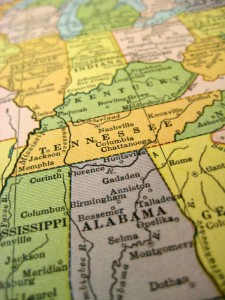9-1-1 Upgrade to Allow Texts, Images
By Brian Haas, The Tennessean
When floodwaters rose at the campground where she was staying near Opryland this past May, Margo Franssen didn’t call 9-1-1. She tweeted her emergency.
“I said, ‘Help! I’m a little freaked out, we’re at the KOA,'” Franssen said. “I didn’t even think about it. I felt so comfortable being on Twitter.”
Emergency dispatchers never got the message, though she made it to safety with the help of her Twitter friends.
Calltakers at 9-1-1 centers across the nation are seeing more and more cases of people trying to text, tweet and Facebook their emergency calls. Teachers at a Knox County school tried to text 9-1-1 when their principal and assistant principal were shot by a disgruntled teacher. Two girls who got lost in an Australian stormwater drain pleaded for help on Facebook.
Most emergency responders can’t even receive those kinds of messages.
Tennessee will be one of the first states in the nation to roll out a statewide, digital 9-1-1 system that will allow text messages, photos and videos from cell phones, but it won’t be available for 12 to 18 months. Already, some dispatch centers have begun upgrading equipment through the state’s $25 million Next Generation 911 project, the largest overhaul of state emergency communications since 1998.
“Ultimately, we want to be able to get texts, video messages if you’re in a car accident, for example. That can help responders in terms of what to expect on the scene,” said Andy Spears, director of government and external affairs at the Tennessee Emergency Communications Board. “We’ll be able to pinpoint your exact location, which is huge for response time. Even a few seconds in an emergency can save someone’s life.”
Every 9-1-1 district in the state will receive at least one digital Next Generation 9-1-1 receiver, Spears said. The technology should allow dispatchers to locate cell phone users much more quickly than the current analog system.
Social Media Not Viable
One thing that Next Generation 911 won’t handle is social media. Currently, it’s too hard to monitor the explosion of new social networking sites such as Facebook and Twitter, said Jeremy Heidt, spokesman for the Tennessee Emergency Management Agency.
In late May, Heidt searched Twitter for messages about Nashville’s flooding earlier in the month. He was horrified to see people tweeting their pleas for rescue instead of calling 9-1-1.
“It was someone who was saying that their residence was inundated and that they were on the second floor and they needed rescue,” Heidt said. “But during the flood it was not monitored.”
Heidt said social networking sites were not designed to act as emergency communications tools.
“What if you get the Twitter ‘fail whale’ when you’re trying to tweet 9-1-1?” he said, referring to a message Twitter users receive when the site is over capacity.
About the Author
Contact Brian Haas at 615-726-8968 or bhaas@tennessean.com.
Copyright © 2010 LexisNexis, a division of Reed Elsevier Inc. All Rights Reserved. Terms and Conditions, Privacy Policy


